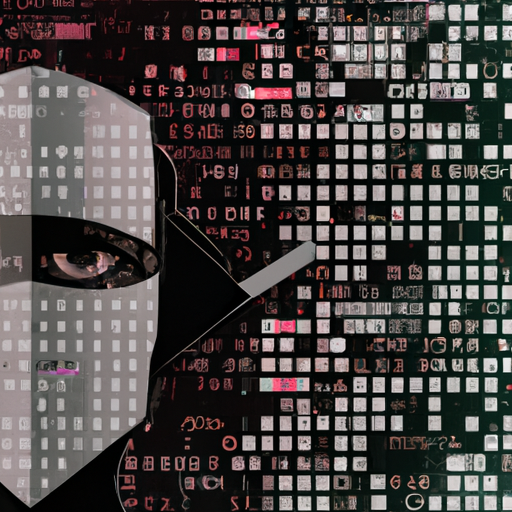
AI and Cybersecurity: Protecting Our Data in a High-Tech World
-
Table of Contents
.
Introduction
As technology advances, so does the need for increased security measures. Artificial Intelligence (AI) and Cybersecurity are two of the most important tools in the fight against cybercrime. AI is used to detect and prevent malicious activity, while Cybersecurity is used to protect data and systems from unauthorized access. Together, these two technologies are essential for protecting our data in a high-tech world. AI can detect patterns in data that humans may not be able to recognize, while Cybersecurity can provide a secure environment for data storage and transmission. By combining the two, organizations can ensure that their data is safe from malicious actors.
The Impact of AI on Cybersecurity Regulations and Policies
The impact of artificial intelligence (AI) on cybersecurity regulations and policies is significant. AI has the potential to revolutionize the way organizations protect their networks and data from cyber threats. AI-based systems can detect and respond to cyber threats more quickly and accurately than traditional methods, allowing organizations to better protect their networks and data.
AI can also be used to automate the process of creating and enforcing cybersecurity regulations and policies. AI-based systems can analyze large amounts of data to identify patterns and trends in cyber threats, allowing organizations to create more effective regulations and policies. AI-based systems can also be used to monitor compliance with existing regulations and policies, ensuring that organizations are following the rules and taking the necessary steps to protect their networks and data.
In addition, AI can be used to improve the effectiveness of existing cybersecurity regulations and policies. AI-based systems can analyze large amounts of data to identify potential weaknesses in existing regulations and policies, allowing organizations to make changes to better protect their networks and data. AI-based systems can also be used to identify potential areas of improvement in existing regulations and policies, allowing organizations to make changes to better protect their networks and data.
Finally, AI can be used to develop new cybersecurity regulations and policies. AI-based systems can analyze large amounts of data to identify potential threats and vulnerabilities, allowing organizations to create new regulations and policies to better protect their networks and data. AI-based systems can also be used to identify potential areas of improvement in existing regulations and policies, allowing organizations to make changes to better protect their networks and data.
Overall, the impact of AI on cybersecurity regulations and policies is significant. AI-based systems can be used to automate the process of creating and enforcing regulations and policies, improve the effectiveness of existing regulations and policies, and develop new regulations and policies. By leveraging the power of AI, organizations can better protect their networks and data from cyber threats.
The Role of Machine Learning in Cybersecurity
Machine learning is becoming increasingly important in the field of cybersecurity. It is a form of artificial intelligence that enables computers to learn from data and make decisions without being explicitly programmed. Machine learning algorithms can be used to detect and respond to cyber threats in real time, allowing organizations to stay ahead of malicious actors.
Machine learning can be used to detect malicious activity on networks and systems. By analyzing large amounts of data, machine learning algorithms can identify patterns and anomalies that may indicate a security breach. This allows organizations to quickly detect and respond to threats before they can cause significant damage.
Machine learning can also be used to detect malicious emails and other forms of phishing. By analyzing the content of emails, machine learning algorithms can identify suspicious emails and block them before they reach the user. This can help organizations protect their networks from malicious actors who are attempting to gain access to sensitive information.
Machine learning can also be used to detect malicious software. By analyzing the behavior of software, machine learning algorithms can identify malicious software and block it before it can cause damage. This can help organizations protect their networks from malicious actors who are attempting to gain access to sensitive information.
Finally, machine learning can be used to detect and respond to cyber attacks. By analyzing the behavior of attackers, machine learning algorithms can identify malicious activity and respond to it in real time. This can help organizations protect their networks from malicious actors who are attempting to gain access to sensitive information.
In conclusion, machine learning is becoming increasingly important in the field of cybersecurity. It can be used to detect and respond to cyber threats in real time, allowing organizations to stay ahead of malicious actors. By leveraging the power of machine learning, organizations can protect their networks from malicious actors and ensure the security of their data.
Exploring the Intersection of AI and Cybersecurity
The intersection of artificial intelligence (AI) and cybersecurity is an increasingly important area of research and development. As AI technology continues to advance, it is becoming increasingly important to understand how it can be used to protect digital systems from malicious actors.
AI has the potential to revolutionize the way we approach cybersecurity. By leveraging machine learning algorithms, AI can detect and respond to cyber threats in real-time. AI-driven systems can analyze vast amounts of data to identify patterns and anomalies that may indicate malicious activity. This allows for more accurate and timely detection of cyber threats, which can help organizations respond more quickly and effectively.
AI can also be used to automate many of the tedious and time-consuming tasks associated with cybersecurity. Automation can help reduce the amount of time and resources needed to monitor and respond to cyber threats. This can free up resources to focus on more complex tasks, such as developing new security protocols and strategies.
AI can also be used to improve the accuracy of security systems. By leveraging natural language processing and other AI technologies, security systems can be trained to better understand and respond to cyber threats. This can help reduce false positives and false negatives, which can help organizations better protect their systems.
Finally, AI can be used to improve the user experience of security systems. By leveraging AI technologies, security systems can be designed to be more intuitive and user-friendly. This can help reduce user frustration and increase user adoption of security protocols.
The intersection of AI and cybersecurity is an exciting and rapidly evolving field. As AI technology continues to advance, it is becoming increasingly important to understand how it can be used to protect digital systems from malicious actors. By leveraging AI technologies, organizations can improve the accuracy and efficiency of their security systems, while also improving the user experience.
The Benefits and Risks of AI-Powered Cybersecurity
The use of artificial intelligence (AI) in cybersecurity is becoming increasingly popular as organizations strive to protect their networks from malicious actors. AI-powered cybersecurity solutions can provide organizations with a powerful tool to detect and respond to cyber threats in real-time. However, as with any technology, there are both benefits and risks associated with the use of AI-powered cybersecurity.
The primary benefit of AI-powered cybersecurity is its ability to detect and respond to threats quickly and accurately. AI-powered solutions are able to analyze vast amounts of data in real-time and identify patterns that may indicate malicious activity. This allows organizations to respond to threats quickly and effectively, reducing the risk of a successful attack. Additionally, AI-powered solutions can be used to automate many of the tedious and time-consuming tasks associated with cybersecurity, such as patching and updating systems. This can free up valuable resources that can be used for other tasks.
Despite the many benefits of AI-powered cybersecurity, there are also some risks associated with its use. One of the primary risks is the potential for AI-powered solutions to make mistakes. AI-powered solutions are only as good as the data they are given, and if the data is inaccurate or incomplete, the AI-powered solution may make incorrect decisions. Additionally, AI-powered solutions can be vulnerable to malicious actors who may be able to manipulate the data or the AI-powered solution itself. Finally, AI-powered solutions can be expensive to implement and maintain, and organizations may not have the resources to do so.
In conclusion, AI-powered cybersecurity solutions can provide organizations with a powerful tool to detect and respond to cyber threats in real-time. However, organizations should be aware of the potential risks associated with the use of AI-powered solutions, such as the potential for mistakes and malicious manipulation. Organizations should carefully weigh the benefits and risks of AI-powered cybersecurity before implementing any solutions.
How AI is Revolutionizing Cybersecurity
The rise of artificial intelligence (AI) has revolutionized the way we approach cybersecurity. AI is a powerful tool that can be used to detect and respond to cyber threats in real-time. AI-driven cybersecurity solutions are becoming increasingly popular as they are able to detect and respond to threats faster and more accurately than traditional methods.
AI-driven cybersecurity solutions use machine learning algorithms to detect and respond to cyber threats. These algorithms are able to analyze large amounts of data and identify patterns that may indicate a potential threat. This allows them to detect threats quickly and accurately, and respond to them in a timely manner. AI-driven solutions are also able to detect and respond to threats that traditional methods may miss.
AI-driven cybersecurity solutions are also able to detect and respond to threats that are constantly evolving. As cyber threats become more sophisticated, traditional methods may not be able to keep up. AI-driven solutions are able to detect and respond to new threats quickly and accurately, allowing organizations to stay ahead of the curve.
AI-driven cybersecurity solutions are also able to detect and respond to threats in real-time. This allows organizations to respond to threats quickly and effectively, minimizing the damage caused by a cyber attack. AI-driven solutions are also able to detect and respond to threats that may have been missed by traditional methods.
AI-driven cybersecurity solutions are becoming increasingly popular as they are able to detect and respond to threats faster and more accurately than traditional methods. AI-driven solutions are also able to detect and respond to threats that are constantly evolving, allowing organizations to stay ahead of the curve. AI-driven solutions are also able to detect and respond to threats in real-time, minimizing the damage caused by a cyber attack. As AI-driven solutions become more advanced, they will continue to revolutionize the way we approach cybersecurity.








